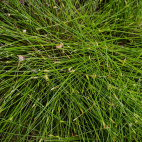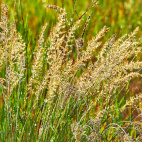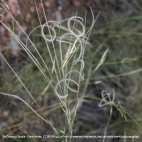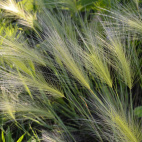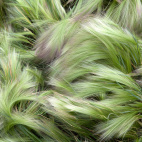Color
Availability
USDA Zone
Region
Type
Duration
Season
Germination
Soil
Sunlight
Height
Narrow Your Search
Color
Availability
USDA Zone
Region
Type
Duration
Season
Germination
Soil
Sunlight
Height
US Native Grass Seeds
The species on this page are not all technically classified as grasses, but the average gardener would probably call them "grass". Here you will find a variety of seeds of native grasses, sedges, reeds, and rushes. You might not think of grass as being as beautiful as flowers, but some of these wild grasses really are beautiful in their own way. Many of the native prairie grasses turn color in autumn, and the rusty bronze color of the stems adds a real fall aura to the planting. Winter birds benefit from the wild grass seeds, and small animals use the thick undergrowth for cover. The biomass of the grass is also the primary source for fuel when a prairie planting undergoes a planned burn.
-
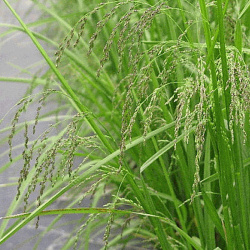 Fowl Manna Grass Seeds
Glyceria striata
As suggested by its name, the fowl manna grass seeds of this popular native plant are a natural food source for ducks, geese, and other domestic birds. In the wild, it prefers a little shade with wet soil, but can also be grown in average soil in full sun.Quick View$3.25 Pkt - $16.57 / Oz
Fowl Manna Grass Seeds
Glyceria striata
As suggested by its name, the fowl manna grass seeds of this popular native plant are a natural food source for ducks, geese, and other domestic birds. In the wild, it prefers a little shade with wet soil, but can also be grown in average soil in full sun.Quick View$3.25 Pkt - $16.57 / Oz -
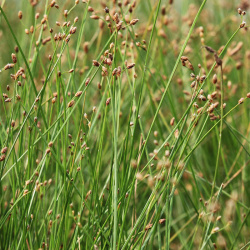 Great Bulrush Seeds
Scirpus validus
The soft stems of this native rush were once used by Native Americans for fine weaving purposes. It grows in the cool seasons and gets quite tall by the time summer arrives. Waterfowl like to feast on the ripened seed heads.Quick View$3.48 Pkt - $18.77 / Oz
Great Bulrush Seeds
Scirpus validus
The soft stems of this native rush were once used by Native Americans for fine weaving purposes. It grows in the cool seasons and gets quite tall by the time summer arrives. Waterfowl like to feast on the ripened seed heads.Quick View$3.48 Pkt - $18.77 / Oz -
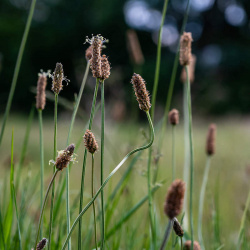 Great Spike Rush Seeds
Eleocharis palustris
This little native rush is often found growing beside creeks, rivers, and ponds. It does not become very tall but grows in the cool season, and it is an excellent food source for ducks, geese, and other creatures of the wetlands.Quick Viewx
Great Spike Rush Seeds
Eleocharis palustris
This little native rush is often found growing beside creeks, rivers, and ponds. It does not become very tall but grows in the cool season, and it is an excellent food source for ducks, geese, and other creatures of the wetlands.Quick ViewxGreat Spike Rush Seeds
Eleocharis palustris
This little native rush is often found growing beside creeks, rivers, and ponds. It does not become very tall but grows in the cool season, and it is an excellent food source for ducks, geese, and other creatures of the wetlands.
$3.96 Pkt - $58.00 / Oz -
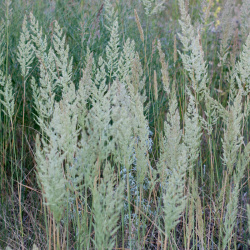 On Sale!
June Grass Seeds
Koeleria cristata
This perennial grass performs well in native plantings that have dry soil. It is a cool-season grass, so it greens up sooner than many of the other prairie grasses. Resistant to both heat and cold, the grass sends up showy seed heads which remain until fall.Quick View$3.48 Pkt - $15.95 / Oz
On Sale!
June Grass Seeds
Koeleria cristata
This perennial grass performs well in native plantings that have dry soil. It is a cool-season grass, so it greens up sooner than many of the other prairie grasses. Resistant to both heat and cold, the grass sends up showy seed heads which remain until fall.Quick View$3.48 Pkt - $15.95 / Oz -
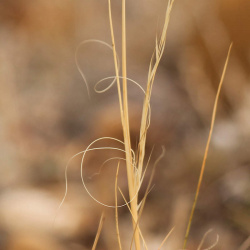 On Sale!
Needle And Thread Grass Seeds
Stipa comata
This perennial bunchgrass produces this unique Stipa Comata Plant that are very sharp on one end and have a long tail on the other end. It grows on the dry soils of the American West, and has excellent drought resistance, but does most of it's growing during the cool seasons.Quick Viewx
On Sale!
Needle And Thread Grass Seeds
Stipa comata
This perennial bunchgrass produces this unique Stipa Comata Plant that are very sharp on one end and have a long tail on the other end. It grows on the dry soils of the American West, and has excellent drought resistance, but does most of it's growing during the cool seasons.Quick ViewxNeedle And Thread Grass Seeds
Stipa comata
This perennial bunchgrass produces this unique Stipa Comata Plant that are very sharp on one end and have a long tail on the other end. It grows on the dry soils of the American West, and has excellent drought resistance, but does most of it's growing during the cool seasons.
$3.48 Pkt - $15.95 / Oz -
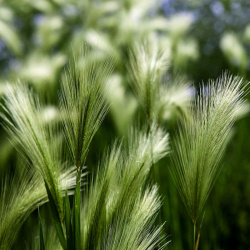 Squirrel Tail Grass Seeds
Hordeum jubatum
It is easy to see how this strikingly beautiful native was named - the seed heads look like little squirrel tails! This small perennial is a cool-season grass and does not grow very tall on the sunny dry soils which it loves.Quick View$3.48 Pkt - $30.00 / Oz
Squirrel Tail Grass Seeds
Hordeum jubatum
It is easy to see how this strikingly beautiful native was named - the seed heads look like little squirrel tails! This small perennial is a cool-season grass and does not grow very tall on the sunny dry soils which it loves.Quick View$3.48 Pkt - $30.00 / Oz
The species on this page are not all technically classified as grasses, but the average gardener would probably call them "grass". Here you will find a variety of seeds of native grasses, sedges, reeds, and rushes. You might not think of grass as being as beautiful as flowers, but some of these wild grasses really are beautiful in their own way. Many of the native prairie grasses turn color in autumn, and the rusty bronze color of the stems adds a real fall aura to the planting. Winter birds benefit from the wild grass seeds, and small animals use the thick undergrowth for cover. The biomass of the grass is also the primary source for fuel when a prairie planting undergoes a planned burn.









